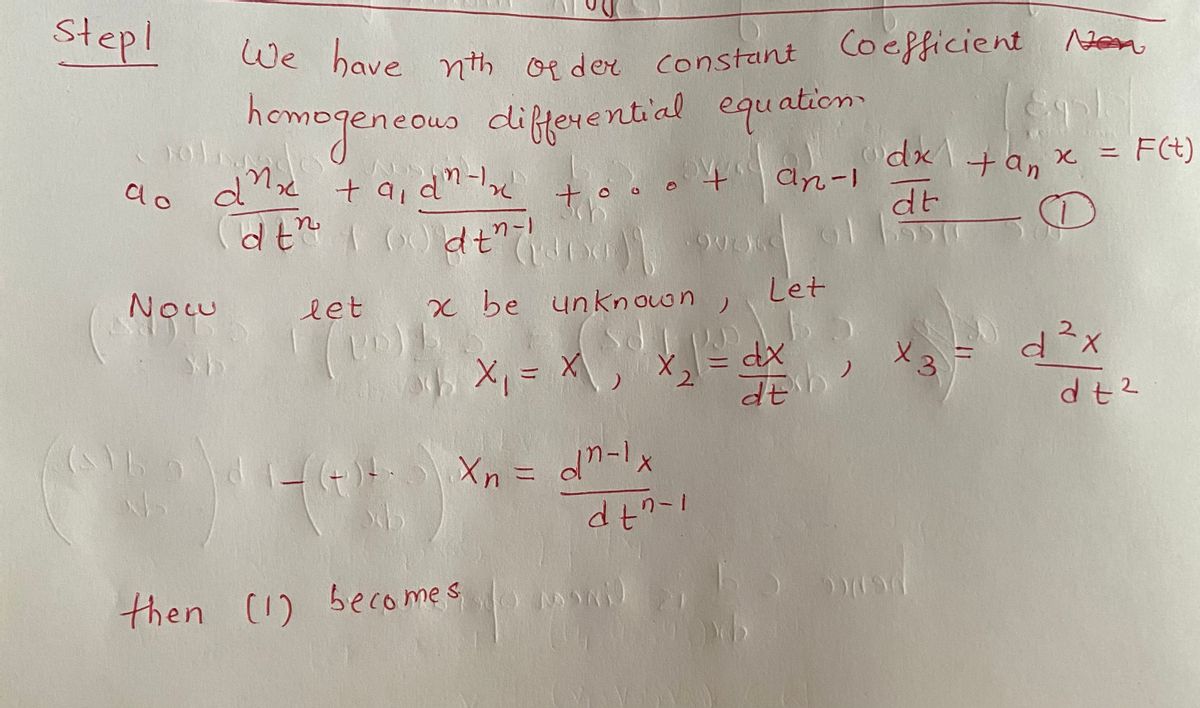In linear algebra, when is a solution unique? How can you connect this to solutions of constant-coefficient, linear, IVP's? d The mapping is a linear operator. Is 24 a linear operator? Is c- d a dx dx dx linear operator? The mapping dxn dn is also a linear operator. What about uP + dxn -? What dx -1 about an dx" + an-1 +...+a1 d + ao ? dæn-1 dx
In linear algebra, when is a solution unique? How can you connect this to solutions of constant-coefficient, linear, IVP's? d The mapping is a linear operator. Is 24 a linear operator? Is c- d a dx dx dx linear operator? The mapping dxn dn is also a linear operator. What about uP + dxn -? What dx -1 about an dx" + an-1 +...+a1 d + ao ? dæn-1 dx
Advanced Engineering Mathematics
10th Edition
ISBN:9780470458365
Author:Erwin Kreyszig
Publisher:Erwin Kreyszig
Chapter2: Second-order Linear Odes
Section: Chapter Questions
Problem 1RQ
Related questions
Question
There's a connection between the Existence and Uniqueness Theorem for constant-coefficient, linear, homogeneous IVP's and

Transcribed Image Text:In linear algebra, when is a solution unique? How can you connect this to
solutions of constant-coefficient, linear, IVP's?
d
The mapping
dx
d
is a linear operator. Is 2 a linear operator? Isc a
dx
dx
linear operator?
dn
is also a linear operator. What about
d
The mapping
dx"
? What
dx
dx"
dn
about an
dæ"
dn-1
+ an-1
d
+ ao ?
+...+a1
dxn-1
dx
Expert Solution
Step 1

Trending now
This is a popular solution!
Step by step
Solved in 4 steps with 4 images

Recommended textbooks for you

Advanced Engineering Mathematics
Advanced Math
ISBN:
9780470458365
Author:
Erwin Kreyszig
Publisher:
Wiley, John & Sons, Incorporated

Numerical Methods for Engineers
Advanced Math
ISBN:
9780073397924
Author:
Steven C. Chapra Dr., Raymond P. Canale
Publisher:
McGraw-Hill Education

Introductory Mathematics for Engineering Applicat…
Advanced Math
ISBN:
9781118141809
Author:
Nathan Klingbeil
Publisher:
WILEY

Advanced Engineering Mathematics
Advanced Math
ISBN:
9780470458365
Author:
Erwin Kreyszig
Publisher:
Wiley, John & Sons, Incorporated

Numerical Methods for Engineers
Advanced Math
ISBN:
9780073397924
Author:
Steven C. Chapra Dr., Raymond P. Canale
Publisher:
McGraw-Hill Education

Introductory Mathematics for Engineering Applicat…
Advanced Math
ISBN:
9781118141809
Author:
Nathan Klingbeil
Publisher:
WILEY

Mathematics For Machine Technology
Advanced Math
ISBN:
9781337798310
Author:
Peterson, John.
Publisher:
Cengage Learning,

